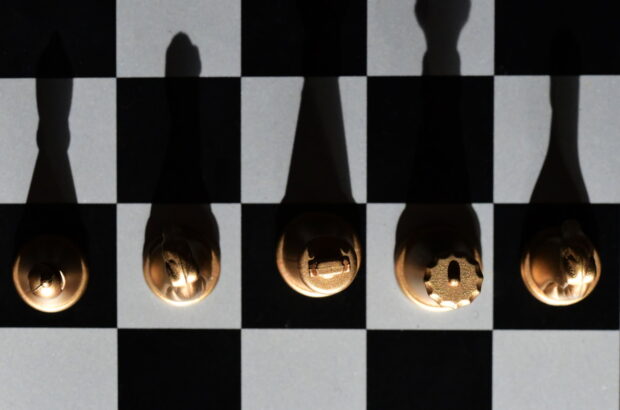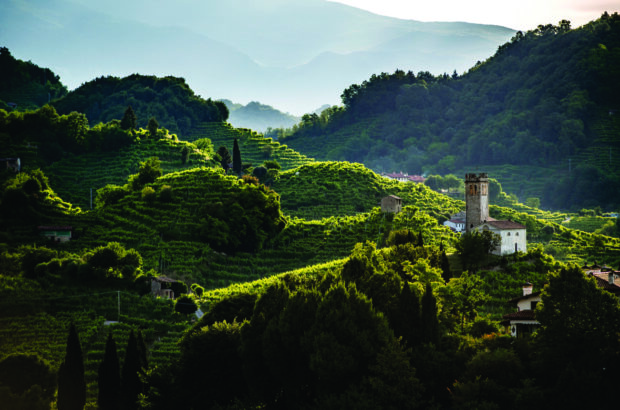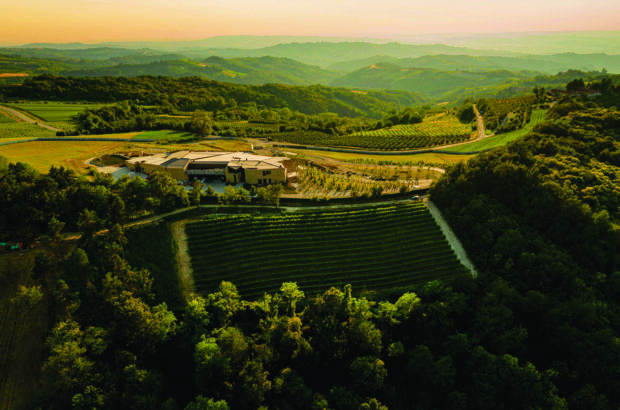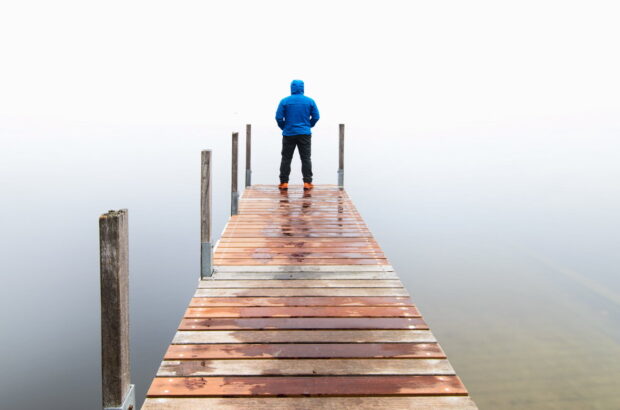As the human population increases, changes in land use are destroying the world’s natural habitats. Widespread spraying of pesticides has been blamed for collapsing insect and bird numbers, while intensive use of herbicides and fungicides contaminates groundwater and degrades the soil, making it dependent on fertilisers.
With mounting evidence that agriculture is contributing to unprecedented biodiversity loss, concepts of environment stewardship and ‘regenerative agriculture’ are gaining ground. Research shows that beneficial insects such as bees and spiders, and birds and bats that feed on insects, are more numerous and diverse on untreated land than on land sprayed with chemicals, and that soils managed sustainably have more organic matter rich in microbiology.
Wine lovers might be forgiven for assuming that, in contrast to large-scale intensive agriculture, wine production has little impact on the natural world. The reality is rather different. Most vineyards are monocultures that rely heavily on preventive spraying of herbicides, fungicides and pesticides to keep disease and pests at bay.
‘In the old days,’ explains Professor Steve Wratten of New Zealand’s Lincoln University, ‘most wine-growers went out into their vineyards more to see what their vines needed and when. Now there is a tendency to spray prophylactically, creating resistance in vines and impacting on both human health and the environment.’
Going green
Awareness of the damage that overuse of chemical treatments in viticulture can do has spread since French soil biologist Claude Bourguignon famously declared in 1988 that the soil of Burgundy’s vineyards was ‘dead’. Growing numbers of wine producers now claim to follow organic or biodynamic practices. It is rare today to find a French vigneron who does not espouse lutte raisonnée (literally ‘the reasoned fight’, meaning the measured use of sprays).
Much of this is of course about promoting a green image. Quite apart from the moral and health arguments for a sustainable approach, there are marketing incentives for producers to portray their wines as pure products of the soil, unsullied by chemicals. ‘Millennials tend to be more interested than their parents in authenticity,’ says Liam Steevenson MW of Global Wine Solutions. ‘Consumers increasingly want to know how wines are produced.’ According to Ed Robinson, the Co-op’s Fairtrade wine buyer: ‘People who buy wine from us expect it to be ethically sourced, fairly traded and kind to the environment.’
Wine producers tend to describe their philosophy as ‘non-interventionist’. But it is an open secret that, given the sensitivity of Vitis vinifera to disease, growing healthy grapes requires intervention.
France is one of Europe’s biggest pesticide users. Its vineyards cover about 3% of agricultural land, but account for as much as 20% of pesticide use. French growers are far from alone in this. Thousands of tons of pesticides and fungicides are used in Californian vineyards every year, more than in any other agricultural sector. Concerns have grown in both regions that use of pesticides and herbicides such as glyphosate, which has been linked to cancer, are exposing not only vineyard workers but also children in schools near vineyards to health risks.
Whether you believe in conventional, organic or biodynamic methods – and it is often argued that ‘organic’ treatments such as copper or sulphur damage the environment more than synthetic sprays – there is a growing pressure around the world to make wine-growing more sustainable. In France, Laurent Brault of Vignerons Indépendants de France explains that: ‘Ecological organisations like Greenpeace and France Nature Environnement have successfully got across the message that unless we act today we will have to repay the debt of our degraded environment tomorrow.’
Faced with concerns about the impact of chemical sprays, the French government is pushing for urgent action and has introduced a new stringent level of environmental certification: Haute Valeur Environnementale (HVE). The target is for 50% of wine-growers to be certified HVE by 2025, with a 50% reduction in chemical sprays. The Conseil des Vins de St-Emilion recently decided that all producers wishing to use the region’s AOP must be certified HVE by 2023.
See also: Animals in vineyards – unlikely helpers
Sustainable initiatives
Change is afoot elsewhere too. Richard Leask from South Australia, who has been awarded a Nuffield Scholarship to research regenerative wine production, says: ‘Increasingly, we are seeing a shift towards more sustainable and less chemically reliant systems in Australia and internationally.’
According to Allison Jordan, executive director of California Sustainable Winegrowing Alliance (CSWA), most Californian wine-growers are adopting nature-friendly strategies. ‘Sustainability is the new normal,’ she adds. Almost a quarter of the state’s vineyards are certified sustainable. Sonoma is committed to becoming the first 100% sustainable wine region in the US in 2019. Oregon also has its own Certified Sustainable Wine (OCSW) scheme.
In New Zealand, almost every wine producer now has Sustainable Winegrowing NZ certification, which requires adherence to standards in biodiversity, soil health, water usage, air quality, energy and chemical use. Tohu Wines in Marlborough spreads crushed mussel shells in the vineyard to reduce herbicides and has planted native shrubs to encourage the return of native birds such as Scaup diving ducks. ‘As a Māori-owned family business, we are here for the long term, which means taking care of our land and water,’ says chief winemaker Bruce Taylor.
According to Professor Yerko Moreno of Talca University, who created the National Sustainability Code of the Chilean Wine Industry, 75% of Chile’s producers are certified sustainable. Producers have to meet requirements in terms of vineyard management, the wine production process and social responsibility. ‘People are crucial to this,’ says Moreno. ‘As a consultant, I encourage producers to train their workers properly, so they embrace new ideas and understand why sustainability matters.’
Ecosystems
Around the world, producers are increasingly taking a more holistic approach that considers the whole environment in which their vineyards exist. The objective is to re-establish natural equilibrium by supporting biodiversity and limiting chemical intervention. Measures include setting aside special areas as natural habitats and creating ‘wildlife corridors’, sowing ‘cover crops’ to reduce need for herbicides, using organic mulches to limit fungicide use; introducing ‘biocontrol’ plants that attract beneficial predatory insects to eat vine pests; or replacing pesticides with natural pheromone traps that sexually confuse, but do not kill, certain pests such as moths whose larvae attack vines.
Duorum’s vineyards in the Douro region of Portugal are located in a Special Protection Area (SPA) designated under the European Union Directive on the Conservation of Wild Birds. They offer habitat for birds including the critically endangered black wheatear, once such a common sight in the Douro’s vineyards that it was nicknamed the ‘Port wine bird’. Duorum has created a conservation plan for the black wheatear and minimises use of chemicals. ‘By conserving natural plantations of olive and almond trees and cereals between vineyards, we promote habitats for hundreds of insect species, including some predators of vine pests,’ says João Perry Vidal, one of the three winemakers leading the project, along with João Portugal Ramos and José Maria Soares Franco.
Carlos de Jesus of Amorim, the world’s largest producer of cork stoppers, stresses that cork also plays a conservation role, supporting the ecosystem of Portugal’s cork forests. ‘There are few other examples of products where the balance of people, planet and profit is so strong,’ he comments.
Anson: Pesticides and the rise of the resistants
Collaborative viticulture
In reality, a more sustainable approach means reducing chemical sprays rather than eradicating them altogether. As Dr Jamie Goode, co-author of the book Authentic Wine: Toward Natural and Sustainable Winemaking, puts it: ‘You need to spray grapes with chemicals whatever your approach, even organics and biodynamics.’ But precision viticulture helps reduce fungicides, while ‘field scouting’, biocontrols and pheromone traps limit the need for pesticides. Some French growers are trialling experimental grape varieties such as Artaban that are resistant to mildew and oidium.
‘The systems we are dealing with in vineyards are much more intricate than we tend to realise,’ says Goode.’ If we make chemical interventions, they may have knock-on effects that are unpredictable. We have to see vineyards as entire agrosystems.’ Brault agrees: ‘We need a paradigm shift. Rather than fighting nature all the time, we must focus on collaborative viticulture – surrounding the vine with an ecosystem that keeps it healthy. That doesn’t mean you won’t use sprays from time to time, but if your vineyard is sustainably managed you might not use them at all in a good year.’
Making the transition to more sustainable methods is hard. There are no ‘one size fits all’ solutions: biocontrols that attract beneficial insects in one place may attract pests in another; vineyards in humid regions depend more on fungicides than dry regions. Moreno says sustainable methods tend to be more labour-intensive and yields lower than for conventional viticulture, so wine prices are higher. ‘Economic sustainability is a crucial aspect of sustainable viticulture. Every sustainable grower who goes out of business is one less environmental protector,’ he notes.
Some argue that it is more cost-effective to produce wine sustainably. ‘We are swiftly moving towards a situation where being environmentally friendly isn’t just sound practice, it’s also better financially,’ says Paul Donaldson of Pegasus Bay in New Zealand. Brault agrees: ‘It is more expensive to spray and work soil intensively than to manage cover crops.’ Ultimately we have little choice. Miguel Torres, who owns vineyards in Spain, Chile and California, feels that, ‘if we don’t take immediate measures, the world and viticulture will be heading for big problems’ as soils become increasingly sterile and viticulture less viable.
Donaldson’s Māori heritage includes the tradition of ‘kaitiakitanga’ or guardianship of the natural world. His tribe’s philosophy is ‘Mō tātou, ā, mō kā uri ā muri ake nei’ (‘For us and our children after us’). He feels that guardianship of the natural world is just common sense. ‘There is no point in having a mono-generational viewpoint,’ he says.
As Goode puts it: ‘If your vineyard practices are not sustainable, then you are expecting the next generation to pick up your tab – and that’s not okay.’
Greening Waipara
In 2005, Steve Wratten, Professor of Ecology at New Zealand’s Lincoln University, started working with four wine producers in the Waipara Valley on the Greening Waipara project. This pioneering biocontrol initiative looks for ways to restore ‘functional biodiversity’ in a region that had lost much of its natural habitat. Trees, shrubs and cover crops were planted in vineyards to attract beneficial insects and suppress weeds; wetlands were created, using plants to filter run-off water from the vineyards. More than 50 vineyards are now involved in the project, some with biodiversity trails for visitors.
The programme shows that enhancing biodiversity in vineyards improves natural pest control and soil fertility. Boosting biocontrols and reducing reliance on herbicides and pesticides enables growers to regenerate natural habitats, save money, improve the marketability of their wines and increase tourism.
‘By cultivating plants like buckwheat between vine rows, which attracts parasitic wasps that kill leafroller caterpillars, growers find that spraying pesticides is no longer economic,’ explains Wratten.
‘In the same way, organic mulches both increase biological activity in the soil and limit botrytis infection in the vineyard, making fungicides unnecessary.’
Rupert Joy is a former diplomat, international consultant and occasional wine writer












